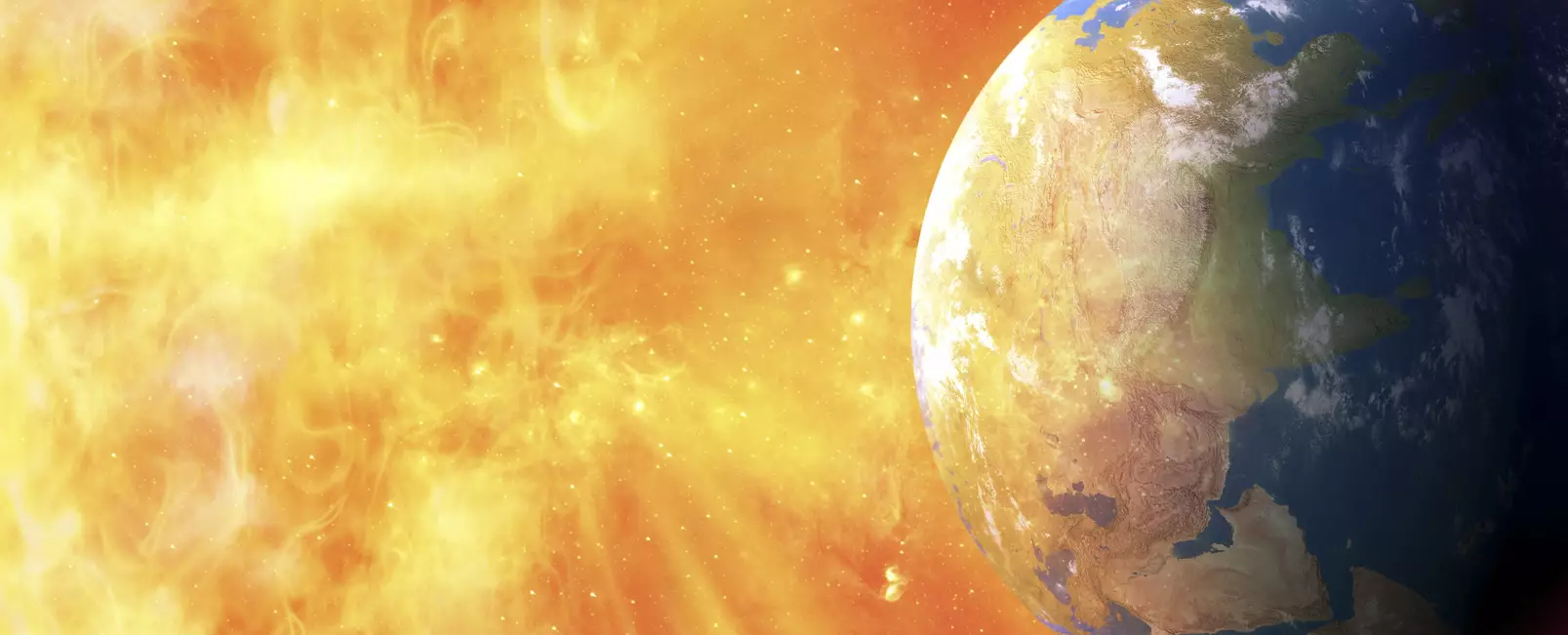In approximately one billion years, the sun’s increasing temperature will lead to the boiling of all the oceans on our planet, ultimately causing the destruction of life as we know it. Scientists have long believed that the fate of life on Earth is nearly sealed. However, a recent study conducted by scientists from the University of Bordeaux, France, and the Planetary Science Institute in Tucson, Arizona, suggests that a passing star could potentially serve as an unlikely savior.
The researchers conducted 12,000 simulations to explore the potential outcomes if a star were to pass within 100 astronomical units, equivalent to approximately 9.3 billion miles, from Earth. Surprisingly, the simulations revealed that our solar system demonstrates remarkable stability. In 92 percent of the cases, the solar system remained almost intact, even when a star passed by. This finding contradicts initial expectations, as Sean Raymond, a study author from the University of Bordeaux, confesses, “I thought more would happen.”
Although the chances are slim, there is a possibility that a passing star could alter Earth’s orbit, rescuing it from its doomed fate. Within 0.28 percent of the simulations, the star successfully pulled Earth out of its orbit and into a more temperate region. The outcomes varied across simulations, with Earth remaining within the solar system but positioned beyond Pluto, residing in a region approximately 10 percent cooler than its current orbit. In other cases, Earth was propelled into interstellar space, ending up in the Oort cloud, two billion light years away, or becoming a free-floating planet in space.
Surprisingly, being flung into interstellar space or becoming a free-floating planet may not be the worst-case scenario for Earth. Sean Raymond emphasizes that it is significantly more challenging to restore a “fried” planet to a habitable state than to heat up a “frozen” world. Free-floating planets, if equipped with moderately thick hydrogen atmospheres, can retain sufficient heat to sustain liquid water on their surfaces, potentially supporting life.
Even in scenarios where Earth was rescued from the scorching conditions, the outcome was not always favorable. In many instances, the planet ended up colliding with the moon or Venus. Therefore, being removed from the dangerous zone did not guarantee salvation.
While the chances of a passing star flying by our solar system within the next billion years are only 1 percent, the simulations predict a 1 in 350 chance of Earth being propelled into a habitable orbit. Combining these probabilities, there is a mere 1 in 35,000 chance that life on Earth will be saved by a passing star. To put this into context, Sean Raymond compares these odds to the probability of simultaneously drawing the ace of spades from two separate decks of cards while rolling a combined 10 with two dice. Clearly, the odds are not in our favor.
The study conducted by scientists from the University of Bordeaux and the Planetary Science Institute highlights the potential for a passing star to serve as an unlikely savior for life on Earth. While the chances are slim, simulations indicate that it is plausible for Earth to be pulled out of its orbit and into a more hospitable region. However, even if saved from the boiling temperatures, the planet still faces the risk of collision with other celestial bodies. Ultimately, the future of life on Earth relies on the astronomical odds of a passing star venturing close enough to provide a fortuitous rescue.



Leave a Reply